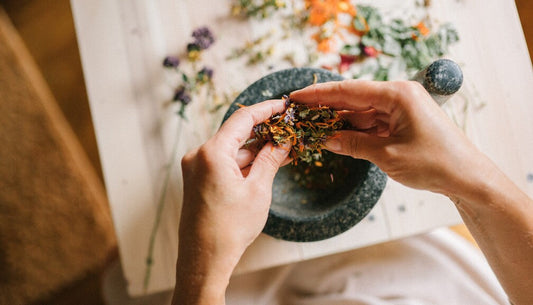Finding balance is one of the greatest challenges in an ever-changing world. And keeping yourself balanced is difficult enough before you add children to the mix. They too have their own doshas and their own daily imbalances, and it can be tricky to figure out what to do to help create harmony for them.
The good news is that children tend to return to a state of balance more easily than adults. They have the tendency to see life in the now and this helps to keep them balanced. The truth is that in many cases, the child’s challenges come from the frustration and imbalances of their parents. The following information will help you recognize potential reasons for imbalance and give you the tools to stay in the moment with your children.
Children have their own personal Prakruti, or constitution, but they may need help recognizing it. They are growing into their personal dosha as well as dealing with imbalances just as adults do. Knowing that Kapha is the stage of childhood can help parents a great deal. Try these tips for the Kapha in your child.
The good news is that children tend to return to a state of balance more easily than adults. They have the tendency to see life in the now and this helps to keep them balanced. The truth is that in many cases, the child’s challenges come from the frustration and imbalances of their parents. The following information will help you recognize potential reasons for imbalance and give you the tools to stay in the moment with your children.
The Kapha Child
Each stage of life has a dosha and for children, Kapha is the dominant trait. Kapha is needed to build growing muscles and bones. This dosha is slower in motion, solid, and made of earth and water. Kapha people are patient and loving. An out-of-balance Kapha, on the other hand, is stubborn and doesn’t want to deal with challenges. This can manifest in children as temper tantrums that take place in the middle of the grocery store when they want that cereal with the Sponge Bob toy.Children have their own personal Prakruti, or constitution, but they may need help recognizing it. They are growing into their personal dosha as well as dealing with imbalances just as adults do. Knowing that Kapha is the stage of childhood can help parents a great deal. Try these tips for the Kapha in your child.
- Reduce mucus-causing foods such as cold milk, cheese, sweets, and processed and canned foods.
- Facilitate some form of daily exercise. Find some activities that the family can do together.
- Try a morning neti pot to help flush out the Kapha mucus that accumulates overnight since children are more prone to colds and a runny nose. This procedure may be a bit of a struggle at first, but if you keep up the process the routine will pay off in reduced sick days.
- Provide some pungent flavors at meals. Adults tend to assume that a child will not eat or doesn’t want pungent food, but you might be surprised. Hot sauce is not the only option for spice. In Ayurveda, pungent is the spicy side of life but not necessarily fiery to taste. Consider foods such as ginger, garlic, onion, and radish.
- Use cloves, eucalyptus, and marjoram as stimulating aromatherapy.
- When shopping for clothes and decorating their bedroom, use colors to balance Kapha, such as yellow, red, and orange.
The Pitta Child
The Pitta child LOVES to compete, shows leadership qualities, is often outspoken, and can get angry at the snap of a finger. When you think Pitta, think fire. Here are some ways to pacify Pitta.- Allow the Pitta child alone time—a little bit every day if possible.
- Do not push the child in competitive sports. They are competitive enough for everyone. If you can act as the calm side of their life, you will help create more balance. If you’re a Pitta parent, this could be a challenge for you as well. Try to keep in mind it is not you who is competing.
- Decorate your child’s bedroom with calming cool colors, such as pastel blues and greens.
- Use aromatherapy after school and at bedtime to soothe your Pitta child. Calm the fire with sandalwood, jasmine, mint, or lavender. A dab of oil on their wrist or wooden bracelet is a good alternative on the road and during school.
- Reduce pungent foods. As an exception, ginger is recommended and although pungent, does not aggravate Pitta.
- Use water to calm the fire. When you sense the fire rising, it may be time for play in some cool water. At school, suggest that your child be allowed to run cool water over their hands.
The Vata Child
Vata is movement. Think of air, motion, and dryness. Does your child tend to jump from one thing to another? Are they distracted easily yet very creative? If you said yes, your child is most likely a Vata. This dosha has a flexible personality and is easier to balance than the other dosha types.- Keep warm. The Vata child may be cold when the rest of the family is comfortable. Keep a jacket in the car, even in summer, for chilly restaurants and cooler sections at the market.
- Cuddle and massage often. Touch from mom and dad may be a little more important and grounding for this dosha.
- Reduce beans, sprouts, and cabbage but allow a little more sweets for the Vata child. Remember sweet doesn’t mean candy. It can be honey, fruit, and even rice.
- Use aromatherapy to balance Vata, using scents such as cinnamon, citrus, basil, lavender, and cloves. These smells can help concentration during study time.
- Decorate the Vata bedroom using earth tones and pastels.






















